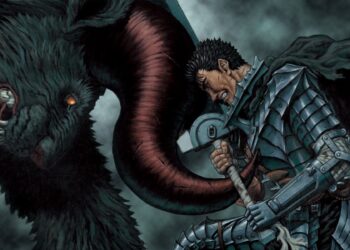Is Getting Out of Bronze in Overwatch 2 a Real Grind? Let’s Break it Down.
Stuck in Bronze in Overwatch 2? You are not alone. Many players find themselves in this situation. Is it a trap that keeps you locked down? Let’s explore facts and see if we can uncover ways to reach higher ranks, like Silver or even Gold.
Understanding the Overwatch 2 Ranking System: It’s a Ladder, Not a Cliff
First, let’s understand the ranking system. Think of it as a ladder. Here’s how it looks:
- Bronze
- Silver
- Gold
- Platinum
- Diamond
- Master
- Grandmaster
- Champion
- Top 500
All ranks, except Top 500, are divided into five divisions: Level 5 to Level 1. Start at Bronze 5 and aim for Champion 1. Climbing is a journey, not a race. In Bronze, you might feel like you keep running into obstacles.
Bronze League: The Land of 4.7% (and Maybe More in Our Hearts)
Now, let’s focus on Bronze. Only about 4.7% of players find themselves here. It may sound elite, but it’s not. It’s often filled with newcomers and those still learning basics like payload escorting. Climbing out is tough. Escaping feels like breaking out of a digital prison.
Grandmaster and Diamond: The Elites and the Aspiring Elites
On the other end, we have Grandmaster (GM) players. Only about 750 players are in this rank. If we estimate 5 million players in competitive play, GM makes up just 0.00015% of players. It’s extremely rare, like finding a perfect loot box.
About 10% sit in Diamond. Platinum holds about 24%, while Gold occupies a large portion at 26%. Silver has around 20.2%, sitting above Bronze, but far from Gold’s gates. To sum up: Bronze is 4.7%, while the higher ranks hold a broader player base. You’re traversing the murkiest waters at the start of your climb.
What Actually Matters for Ranking Up? Hint: It’s Not Your Fancy PotG Montages
If you want to escape Bronze, what must you do? Let’s break down the essential ranking factors.
- Skill Rating (SR): The Invisible Hand. Think of SR as your hidden power level. Blizzard uses it to determine your rank. It’s not visible, but always affects your performance.
- Win/Loss Record: The Brutal Bottom Line. Ultimately, Overwatch 2 is about winning. Your rank depends heavily on your win-loss record. Win more often, and your SR rises. Lose too frequently, and you’ll see drops.
- Rank Modifiers: Streaks and Calibration Shenanigans. These are little boosts from the game system. Winning streaks grant more SR, while calibration matches can determine your starting placement.
- Individual Performance Stats: The Great Lie. Here’s an important detail: Dev teams note that individual stats do NOT impact rank. It doesn’t matter if you perform well personally if your team fails to win.
- Focus on Winning (Duh, But Really!). Your rank is primarily determined by wins and losses. Team victory is more important than personal glory. Do what’s necessary to win, even if it means playing a less glamorous hero.
- Team Coordination: The Secret Sauce. Overwatch 2 places high importance on teamwork. A well-coordinated team has greater chances of success. Communication and synergy are key factors to rise from Bronze.
- Hero and Game Mode Mastery: Know Your Stuff. Understanding heroes and their matchups is crucial. Knowing how to navigate game modes effectively matters too.
- Warm-up, Hero Breadth, Awareness: The Holy Trinity of Improvement. Want practical advice? Here it is:
- Warm-up, Warm-up, Warm-up. Don’t enter ranked matches without warming up first.
- Learn a Broader Range of Heroes. Flexibility in heroes can offer a tactical edge.
- Get in ‘the Zone’ and Be Aware of Your Surroundings. Stay focused and avoid distractions for better outcomes.
Is Bronze Really ELO Hell? The Difficulty Factor
The big question: Is it hard to escape Bronze? The answer is subjective but often yes. For new players, getting past Bronze can feel impossible. This rank is filled with a mix of newcomers and those learning game mechanics. It can be chaotic.
The Infamous Bronze 5 Bug: A Glitch in the Matrix (Hopefully Patched)
There was a time many players reported a “Bronze 5 bug.”
A graphical glitch trapped players in Bronze 5. They could not rank up despite winning. This “Bronze 5 bug” frustrated many. Winning often, yet remaining in the lowest rank, was discouraging. Blizzard fixed it, showcasing the odd issues present in competitive gaming. Digital ladders can have broken rungs.
Time and Persistence: The Unsung Heroes of Climbing
Climbing any rank takes time and dedication. Reaching the Top 500 requires effort. Getting out of Bronze also needs consistent play and a focus on improvement. There’s no magic button to press. It demands resilience to cope with losses and bad teammates. Think of it as a marathon.
Matchmaking and Grouping: Playing with Friends (or Not)
In Overwatch 2, skill-based matchmaking assigns players to matches. It aims to group you with those of similar skill levels. Various factors matter, but skill drives matchmaking. The goal? Balanced matches. Still, sometimes it seems the system is just laughing.
Rank Restrictions: Who Can Queue With Whom?
Rank restrictions can limit who you play with in ranked games. Bronze, Silver, Gold, Platinum, and Diamond players can group within two skill tiers. So, a Bronze player can team with Silvers or Golds. Masters can only combine with one skill tier. Grandmasters can group within three tiers, limiting carry potential.
Party Size Restrictions: No Four-Stacks Allowed!
Overwatch 2 allows flexible grouping. Queue as a duo, trio, or five-stack with friends of varying ranks within limits. However, four-stacks are not allowed. A four-stack would leave one player solo. This setup is deemed unfair. Thus, no four-stacks exist. Five is more fun anyway.
5-Stack RR Reduction in Valorant (For Context): Penalties for Wide Rank Gaps
In Valorant, five-stacking outside your rank leads to reduced RR gains. Win with players outside your range, and you might earn less RR. Lose? You could lose more than usual. The reduction varies based on the rank gap. Overwatch 2 does not have explicit penalties but likely makes subtle adjustments.
Demotion and Rank Resets: What Happens When You Fall (or a New Season Starts)
Demotion is an unwelcome part of the climb. In League of Legends, zero LP calls for dropping to a lower division. Overwatch 2 doesn’t use LP, but if you lose enough games at the bottom, you can drop to a lower division. It’s the nature of competitive play.
Demotion Protection: A Temporary Shield
Demotion protection exists as a slight safety net. When you promote to a new tier, you often receive this shield. It prevents immediate demotion back down if you lose a few games. This allows adjustment time in your new rank. It’s like a trophy for leveling up.
Rank Resets: Seasonal Shuffles
New competitive seasons mean rank resets in Overwatch 2. It’s a soft reset, not a total wipe. Your rank drops slightly, creating a fresh start for all players. It’s a way to shake the ladder and make everyone climb anew. Customer support cannot manually reset ranks otherwise.
MMR Reset: Free-for-All Modes Get a Shake-Up
Blizzard occasionally resets MMR for modes, typically not for main Competitive or Quick Play. They have reset MMR in modes like Deathmatch. This differs from seasonal resets and focuses on recalibrating matchmaking in those modes. It helps determine new skill levels based on recent performance.
Competitive Points and Rewards: Shiny Guns and Bragging Rights
Grinding through competitive earns you Competitive Points (CP) and end-of-season rewards. Winning matches brings 25 points; draws grant 10 points. At season’s end, you receive bonus CP based on your highest rank achieved during that season. CP buys golden weapons.
Jade Guns: A New Shiny Toy
New seasons offer new rewards. Jade guns join the cosmetics lineup for a shiny goal. You need 3,000 CP for one jade gun, just like golden guns. That means 300 wins for enough CP for one jade gun. Start winning to earn that new bling!
End-of-Season Rewards: Pat on the Back (and Some CP)
At season’s end, you receive additional CP based on your highest rank. It’s Blizzard’s way of appreciating your competitive efforts. Higher ranks yield more bonus CP. Even if climbing higher is tough, it’s an incentive to keep going for more shiny points.
Factors Influencing MMR: The Hidden Math
MMR operates through complex hidden systems, but certain factors can influence it. One factor is “Expected Win.” If this appears after a match, the system thought your team was likely to win due to MMR averages being higher than the opponents’. Usually, you’ll gain less SR for wins and lose more for losses.
Volatility: Demotion Protection’s Cousin
You may notice “volatility” in games too. This term often relates to demotion protection. High volatility indicates rapid MMR adjustments due to win/loss streaks or placement after rank reset. Such measures help gauge true skill levels over time in games.
Penalties: Don’t Be Naughty
Overwatch 2 includes rules and penalties against misbehavior.
- Leaving Unranked Games: Timeouts for Leavers. Even in casual modes, excessive leaving will trigger penalties. Leaving two or three of your last 20 games risks a suspension from most modes. Quitting isn’t appreciated.
- Abusive Chat: Words Can Hurt (Your Account). Abusive chat reports result in penalties.
- Reports do fade away over time. But too many can lead to actions against your account. Be polite, or at least civil.
- Swearing: Language Issues. Profanity, in any context, may violate the code of conduct. Reports can lead to bans. Keep your language clean. Mute chat if it turns toxic.
- Competitive Bans: Three Strikes. Three separate bans from Competitive Play can lead to a permanent ban from it. Avoid being a repeat offender. Play fair, and stay in the game.
Miscellaneous Facts: Profile Privacy and More
Here are some useful but random facts:
- Hiding Your Profile: Going Incognito. Want to hide your profile? In the options, go to the “Social” tab. Set “Career Profile Visibility” to “private.” You become a digital shadow, hidden from others.
- Unlocking Heroes: The Journey. New to Overwatch 2? You must unlock the heroes. It takes about 150 games to unlock all original heroes. Start playing to expand your roster.
- In-game Menus: FPS Lock. Your in-game menus may feel slower than gameplay. The menus are capped at 60 FPS. This is by design, not a performance issue. Gameplay smoothness comes first.
Is it tough to escape Bronze in Overwatch 2? Yes, it can be. You need to grasp the game. Focus on winning and improving skills. Sometimes you just need to push through chaos. It’s not impossible. Master the basics. Learn from errors, and you might see that Silver badge soon. Climb that ladder, but watch your step.
For insights into ranking, visit All Overwatch 2 Ranks Explained – GameTree and Understanding Overwatch Ranks | HP® Store. If you’re confused about “Expected” in competitive matches, check out What Does Expected Mean in Overwatch 2 Competitive? – Sports Illustrated.










